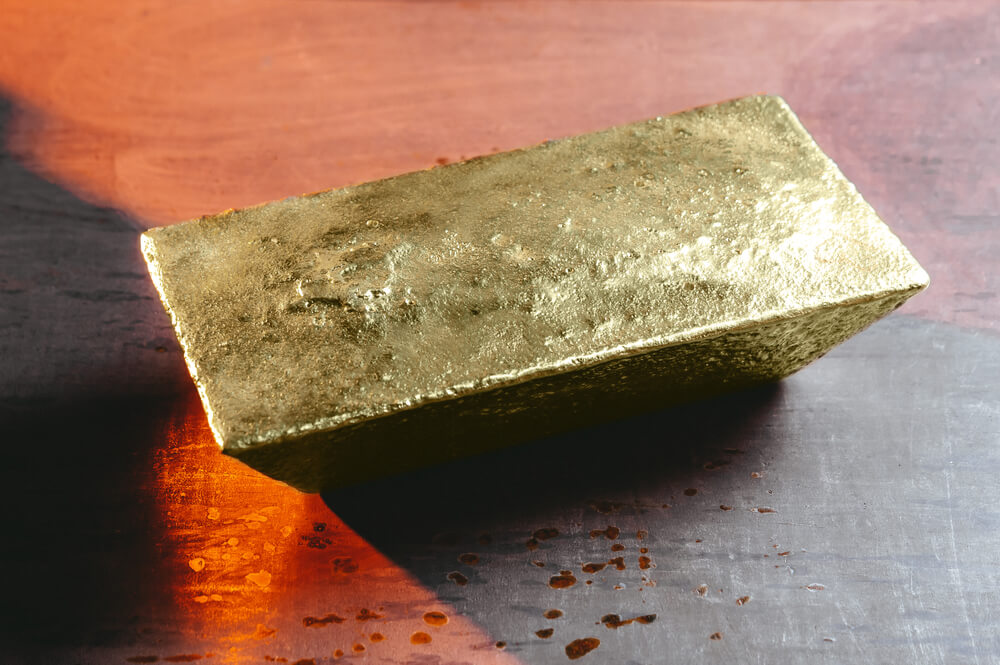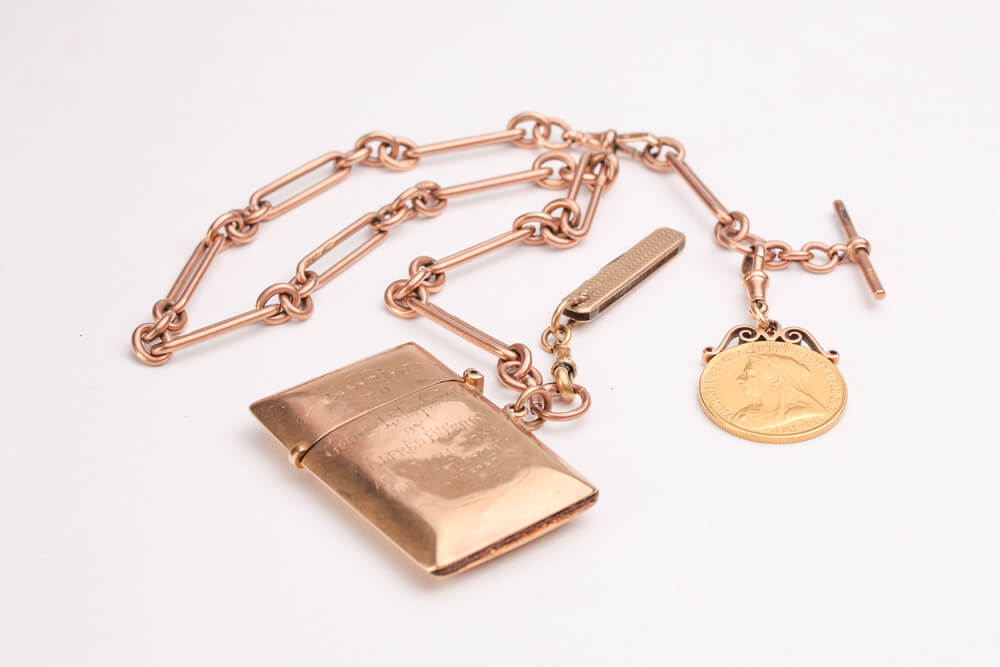
Silver Roth IRA: A Complete Guide
People usually don’t invest in precious metals a lot. Even if they do, the concentration is mostly toward gold. When investors want to put their money somewhere, they usually think of stocks, bonds, funds, etc. A precious metal like silver is a very distant thought. And that’s understandable since silver is not as glamorous as gold or platinum.
But there’s investment potential to silver that people miss out on. The more shrewd investors usually tap into any veritable opportunity at their disposal to purchase silver. One such option is a silver Roth IRA. If you know how Roth IRAs work, you’ll get quickly familiar with the silver variety. But if you don’t understand what Roth IRAs are, don’t worry; we’ve got you covered.

The goal of this article is to introduce you to the concept of silver Roth IRAs and every other information pertinent to it. To gain a comprehensive understanding, we’ll focus on the following:
- An introduction to silver IRAs
- An overview of a Roth IRA
- Silver Roth IRAs and setting them up
- The pros and cons of silver Roth IRAs
- Key Roth silver IRA investing strategies
- Answers to related questions and more
There aren’t many resources on the web focussing on silver Roth IRAs. We want to change that. Read on to learn Roth silver IRAs in great detail.
Table of Contents
What is a Silver IRA?
A silver IRA is a precious metals IRA arrangement usually set up for retirement age. Unlike a traditional IRA, a silver IRA allows investments in physical silver. The self-directed IRA account also permits other physical precious metals such as gold, platinum, and palladium. The only criterion the physical metals must meet is conformance to IRS (Internal Revenue Service) guidelines. The following are the guidelines for IRA-approved silver:
- The silver bullion (coins, bars, or rounds) must be at least 99.9% pure, such as the American Eagle Silver, Canadian Maple Leaf, Austrian Silver Vienna Philharmonic, and the Mexican Silver Libertad, to name a few. The Maple Leaf silver coin made by the Royal Canadian Mint is one of the purest at 99.99%. Numismatic or rare coins are not allowed, even if they are pure enough. There may be exceptions, however.
- The silver coins and bars must be minted by an IRS-recognized or government mint, assayer, or manufacturer. The refiner should be certified by the NYMEX, COMEX, etc. Augusta Precious Metals, for example, is an IRA-approved metals dealer.
To buy the silver, you must add funds to the silver IRA account or rollover funds from an existing IRA account or another retirement account, such as a 401(k). Note that only one rollover a year is allowed. This rollover rule applies to the existing individual retirement account from which the money was rolled over and your new precious metals IRA. Also, the rollover could be partial, complete, indirect, or direct. We’ve already discussed the topic in detail here. (Hyperlink “here” with the “Silver IRA Rollover” article link).
The silver purchased must be stored at an IRS-approved depository. Storing the silver elsewhere will void the self-directed IRA account and invite a flurry of taxes and penalties. The storage option provided could be segregated or commingled. A commingled arrangement entails storing your silver assets with the precious metals of other account holders. Segregated storage is a discreet setup where space is dedicated to your silver and other precious metals in your account. Needless to say, “segregated storage” incurs more storage costs.
The silver IRA could be of different types. The two primary classifications are “traditional” and “Roth.” SEP IRA is another category. We’ll discuss the Roth silver IRA in detail later in the article. To give a brief intro, the two forms of silver IRA are quite similar. The tax component or the timing of the taxes applied varies between the two. But before that, let’s understand the need to create a silver IRA account.
Why Set Up a Silver IRA?
A silver IRA is an excellent way to invest in physical silver or other physical precious metals without having to worry about storing the precious metals safely and securely. Then, the obvious financial benefits of investing in silver include retirement portfolio diversification, inflation hedging, liquidity, etc. Stocks, bonds, ETFs (exchange-traded funds), mutual funds, and other paper assets are incredibly vulnerable to the stock market and inflation.
If you invest in silver today, its value will have increased in the next five years or a decade, safeguarding your financial future to a reasonable extent. If the same money were lying in the bank, inflation would have eaten its worth. Although physical gold affords the same benefits or exhibits even better capital appreciation, the cost barrier is much lower with silver than gold. Silver is also very liquid or more straightforward to sell than other physical assets—for instance, real estate.
Ensure your silver IRA doesn’t occupy more than 5% of your investments or savings portfolio for proper diversification. Otherwise, you risk spreading the benefits of adding silver to the portfolio too thin.
Read more: IRA-Approved Platinum
What is a Roth IRA?
As stated earlier, a Roth IRA is not different from a traditional precious metals IRA. It’s an individual retirement account type that accepts contributions with after-tax funds, unlike 401(k) plans and traditional IRAs. In other words, taxes apply when adding funds to the IRA. Conversely, the withdrawals and earnings are tax-free, provided specific conditions are met. A Roth IRA permits a variety of assets under its fold, including precious metals, mutual funds, stocks, bonds, real estate, etc. A silver Roth IRA is a form of a Roth IRA.
Another point of differentiation is that a Roth IRA doesn’t necessitate RMDs (required minimum distributions) during the account’s lifetime. A traditional IRA mandates withdrawals at age 72 (this may change in the future). Due to this provision, the funds in your Roth IRA could add up tax-free for the longest period possible. The similarities with a traditional silver IRA include income limits, flexible investment choices, estate planning advantages, etc. There may be discrepancies depending on the self-directed IRA custodians you work with.
Roth IRA Tax Advantages
One of the biggest attractions of a Roth IRA is the tax-free qualified distribution. The tax benefit applies to your IRA earnings and original contributions alike. Not owing income taxes on the withdrawals could lead to significant tax savings when you hit retirement age. Since Roth IRAs have no RMD requirements, you can keep the tax benefits and pass them on to your heirs.
What is a Silver Roth IRA

A silver Roth IRA is a Roth IRA with silver as one of its assets. The IRA could have silver as the primary asset class or constitute the precious metal in marginal percentages. But it must have some form of silver to be called a silver Roth IRA. The silver component could be physical or digital (on paper). Mainly, however, a silver Roth IRA comprises physical silver investments. It could also hold physical gold, platinum bullion, palladium coins, etc.
Note that a “Roth silver IRA” is not official terminology or IRS designation but only a descriptive term. Therefore, it’s okay to refer to it as “precious metals Roth IRA,” “self-directed Roth IRA,” “gold IRA,” etc. The word tries to focus on the account’s silver investments or when a significant portion of the asset classes are silver or related.
Setting Up a Roth Silver IRA
Opening a Roth silver IRA is the same as setting up traditional silver IRAs. You have to locate an established and reliable self-directed IRA custodian. Since a silver IRA functions unlike a standard IRA, conventional custodians like banks and other financial institutions cannot be your silver IRA company since they likely do not have the expertise or experience to manage silver IRAs or other precious metal IRAs.
The IRA custodian must be a member of industry trade groups such as the American Numismatic Association (ANA), Professional Numismatists Guild (PNG), or the Industry Council for Tangible Assets (ICTA).
Choose a depository and your silver dealer after zeroing in on a silver IRA firm. Most likely, the precious metal IRA company will pick those stakeholders for you, which makes selecting a suitable IRA custodian vital. If you choose a custodian unfitting to your needs, your overall experience setting up and managing the silver IRA will also be sub-par. In other words, the proper IRA custodian will ensure the dealer supplies the highest-quality silver and that the depository’s security infrastructure is on point.
Adding Silver to Roth IRAs
For your silver Roth IRA, you can purchase physical silver (coins or bars), silver ETFs, silver mining stocks, etc. You won’t need an IRS-approved depository except for physical silver. A silver ETF is a solid digital alternative to the metal. It tracks silver prices, and you can buy ETF shares. Silver mining firms' stocks are another way to gain silver market or industry exposure indirectly.
Silver Roth IRA – Benefits and Drawbacks
The following is an overview of the advantages and disadvantages of a Roth silver IRA.
Direct Control
As a Roth silver IRA holder, you have complete authority or control over the account. The custodian is purely a facilitator. They cannot decide about your account independently, even if they have years of experience managing precious metals IRAs or expertise in handling precious metals products. You select the silver bullion that goes into the account. You can also always add gold coins or platinum coins to the mix.
Tax-Free Growth
A silver Roth IRA’s marquee takeaway is your silver investments can grow tax-free. In other words, as the silver investments’ value increases over time, there won’t be any taxes on capital gains at the time of IRA funds withdrawal. Both the earnings and the principal contributions will be tax-free.
Zero RMDs
A Roth silver IRA has no minimum distribution requirements. On the other hand, RMDs are mandatory with standard IRAs and 401(k)s. Because you are not instructed to withdraw from the IRA, your silver and other investments can remain and continue to grow tax-free for the most prolonged possible period.
Portfolio Diversification
A silver Roth IRA is an excellent way to diversify your investment portfolio or spread risks. The precious metal has served as a ring against inflation and economic uncertainty several times. It complements stocks, bonds, and other traditional investments well, potentially decreasing overall portfolio risk. If inflation erodes your traditional assets’ value, a Roth silver IRA in your kitty could help safeguard your purchasing power.
Different Forms
A Roth silver IRA allows various forms of silver to be bought under its name and does not just restrict purchases to the physical metal. In other words, silver mining stocks, silver ETFs, silver bonds, etc., are also welcome. The various forms lend flexibility to the portfolio or tailor the investments based on your investment choices and risk tolerance.
Physical Asset Ownership
As a Roth silver IRA owner, you own the silver bought through the retirement account, provided you invested in physical silver. You technically do not own silver metal if your silver assets are only in stocks and ETFs. The silver coins or bars you invest in through the IRA afford a sense of control and security over your savings.
Price Volatility
Although silver is inherently valuable, it has deep industrial applications. As a result, the price of silver can fluctuate significantly. When industries flourish, the silver value goes up. When the manufacturing sector goes through a lull, prices take a hit. As a silver investor, you must be ready for such price fluctuations.
Beneficial to Heirs
Silver held within a Roth IRA provides estate planning advantages. After your demise, the account's beneficiaries can inherit the assets tax-free because someone already paid them. The tax-free withdrawals apply if the original account owner held the Roth IRA for at least five years. With traditional IRAs, any amount withdrawn is subject to regular income taxes.
Storage Expense
If you invest in physical silver, you must bear storage costs. And that it is irrespective of whether you purchase the precious metal within or outside the realm of a silver IRA. IRS-approved depository expenses can constitute a significant portion of your precious metals IRA costs. The costs can take up a good chunk of your returns, particularly in the case of smaller investments.
Restricted Portfolio Growth
As stated earlier, silver or other precious metals must make up around 5% of your retirement portfolio because of the limited growth potential. Gold, silver, platinum, etc., do not offer interest income or dividends. The gain is purely through asset appreciation, which can be realized only at maturity or when you’re ready to withdraw the funds. If a silver Roth IRA is your only retirement savings/income form, you might repeatedly liquidate the silver to acquire cash, possibly in an adverse economic climate.
Lack of Income
Related to the above, a Roth silver IRA will not create regular income as it doesn’t pay dividends like stocks or interest income like bonds. If you rely solely on the self-directed IRA for retirement money, the zero income creation or lack of a proper cash flow can significantly impact your overall financial plan. And if you choose not to take withdrawals after 72, the need for funds will be even more immense.
Complex IRA Management
Although IRA custodians are there to help, that doesn’t make managing a silver IRA a walk in the park. It’s more complicated than handling traditional individual retirement accounts. Besides more significant fees, you’ll also have to put additional effort and time into the process. Staying on top of the transaction costs, changing precious metal rules, continually monitoring your silver holdings’ condition and value, etc., are things to ensure.
Not the Most Liquid
Although silver is a precious metal and relatively easy to sell and buy, it’s not as liquid as gold. And when silver prices plummet due to an industrial activity pause, finding a buyer for your silver could be pretty hard. Not to mention, the transaction costs and delays incurred with finding a buyer can be challenging. Silver ETFs and mining stocks, on the other hand, could be easier to liquidate as they are sold and bought on stock exchanges.
Silver Roth IRA Investing Strategies
To be successful with silver Roth IRA investing, here are a few things to be on top of.
Long-Term Holding
Be in it for the long haul. Just because a silver Roth IRA affords withdrawals anytime, do not exercise that option. The longer you stay invested or hold the silver ETFs or physical silver, the better your chances of boosting your gains or withdrawing the maximum you could at withdrawal time. This approach will help you benefit from silver’s capacity to function as a value store and financial uncertainty hedge.
Over time, silver will appreciate, as it has always done. And with qualified withdrawals during retirement, the gains could be tax-free. Adopting the short-term lens means you’ll have to be much more active. In other words, short-term investors may have to indulge actively in trading to capitalize on the transient price movements. You may also have to be glued to the news, do technical analyses, and time your silver purchases and sales.
Balance It Out
As stated several times, don’t go overboard with your Roth silver IRA investments. Take a balanced view to handle risks effectively. Assign a part of your retirement account savings to a Roth silver IRA while investing in other asset classes, such as stocks and bonds. It’s also recommended to always have some liquid cash in the bank handy, just in case. This approach will help you tap into the precious metal’s potential positives while dispensing risk.
Stay Current with the Account
Ensure your Roth silver IRA investments remain within control always by reviewing and rebalancing your portfolio periodically. If your silver holdings’ value has increased considerably than your other investments, sell some of the silver and reallocate the proceeds toward boosting the underweighted asset classes or making other IRA purchases.
Internal Diversification
If you invest in physical metals within your Roth silver IRA setup, let those metals not be silver only. Purchase gold and silver in equivalent proportions to spread your risks or ensure your investments are not treated to particular risks linked to a specific metal or form. Also, investing in different kinds of precious metals, such as coins and bars, is recommended. They come with their unique sets of pros and cons.
For example, silver coins such as the Canadian Maple Leaf or the American Silver Eagle are globally recognized and, therefore, easy to trade. Individual investors usually prefer them for their liquidity and divisibility. On the other hand, silver bars are ideal for investing in more significant amounts of silver, thanks to their lower premiums over silver spot prices. However, these bullion bars could be less liquid because they usually trade in bigger sizes.
Not to mention, the various form factors could respond contrarily to varying economic factors and market scenarios. For example, the premiums on smaller denomination silver coins could rally during high-demand periods compared to the silver bar chunks. So, if a recession is predicted, you can pre-emptively buy more coins and let go of some of the bullion bars.
Stay Industry-Aware
Since silver is used in industries, keep updated with market trends and what’s generally happening. Be on top of inflation news, geopolitical events, industrial demand, and other factors that could influence silver value. Such information and events could affect investor sentiment and the prices of silver. Monitoring inflation trends and expectations could offer insights into potential silver value movements.
Also, learn more about the metal’s fundamentals, such as its uses, past price trends, and factors influencing its trade, so that you can make more educated investment decisions. To stay informed, read financial reports, precious metals market news, government publications, and economic indicators.
Enable notifications or price alerts to stay up-to-date with significant silver price movements. It’s worth mentioning that you must accumulate all of this knowledge and awareness for the long term. Ignore or don’t get perturbed by short-term price movements, as they are expected. Panicking or giving kneejerk reactions to them will only be counterproductive.
Get Professional Guidance
Although the IRA custodian is there to assist, and the primary research and keeping up to date with the market news and trends will help keep your new silver IRA in good stead, it’s still advised to seek help from an expert, such as a tax professional or financial advisor.
Engage with someone experienced and skilled in precious metal retirement accounts so they can help personalize your Roth silver IRA investment strategy optimally. You’ll likely need assistance with tax implications, estate planning, and compliance with IRS regulations.
Read more: How Does a Gold ETF Work?
Conclusion
If you want to invest in physical silver or diversify your portfolio, look at a Roth silver IRA. It’s a versatile and unique investment option for those keen on tapping into the precious metals’ timeless allure. A Roth silver IRA offers many benefits—the primary among them being tax benefits. A silver Roth IRA is an excellent option if you want to leave behind assets for your kin and don’t want them to be embroiled in tax complications pertaining to those holdings.
As stated, “silver Roth IRA” only indicates and doesn’t deny entry to other precious metals, assets, and commodities. So, if you’d like to add gold in minor quantities to your Roth silver IRA, not to be heavily reliant on one type of asset class, the self-directed precious metals IRA can play along those lines. If you’d like to learn more about buying precious metals through an IRA, feel free to browse the other articles on our website.
FAQs
Is “earned income” essential to set up and roll with a silver Roth IRA?
Yes, “earned income” is mandatory for a Roth silver IRA. Note that the income must be “earned,” which means passive income sources such as interest, dividends, rental income, etc., do not qualify. Salaries, wages, self-employment income, bonuses, tips, etc., are eligible.
Can I not withdraw a Roth silver IRA when I turn 72?
Yes, you can refrain from withdrawing from a Roth silver IRA even when you turn 72 and can continue to contribute and hold funds in the account. This is unlike a traditional IRA that mandates RMDs as you complete 72.
Can I hold a Roth silver IRA and a traditional silver IRA together?
Yes, you can own multiple precious metals IRAs since there’s no ceiling to how many one can hold. However, it depends on your investment strategy, financial objectives, and tax considerations. Since the tax timing varies between the two, you can ascertain which account to draw funds from depending on your tax scenario during retirement, theoretically enhancing your tax efficiency.
Just beware that the total amount you contribute to your IRAs each year will be restricted to the maximum annual sum the IRS allows. If you contribute $1,500 to your standard IRA, you can provide no more than $4,500 to your Roth IRA. In other words, you cannot hit the upper contribution limit on each account separately.
Should you hold gold in a silver Roth IRA?
There’s no rule that you must add some gold to a Roth silver IRA. But if you can, preferably do so. Gold’s unique set of attributes helps complement or offset the minor shortcomings of IRA silver bars and coins. For example, gold’s relative stability and “value store” status can hedge against silver’s price fluctuations during industry slumps. Consult with a financial advisor to ascertain the suitable gold and silver allocation.
Does silver Roth IRA offer dividends or interest income?
No, a silver Roth IRA will not provide dividends or interest money. All returns can be realized only at the time of withdrawal. Any returns produced will stay in the account even if the IRA holds silver stocks and bonds. You can, however, reinvest the income generated in different or the same assets in the self-directed IRA.
Can I contribute to a Roth silver IRA in kind?
No, contributions to a silver Roth IRA must be made in cash. You cannot add physical assets to self-directed IRAs if they are not eligible for inclusion. Instead, liquidate those assets and transfer the funds realized to the account to invest in IRA-eligible assets.


